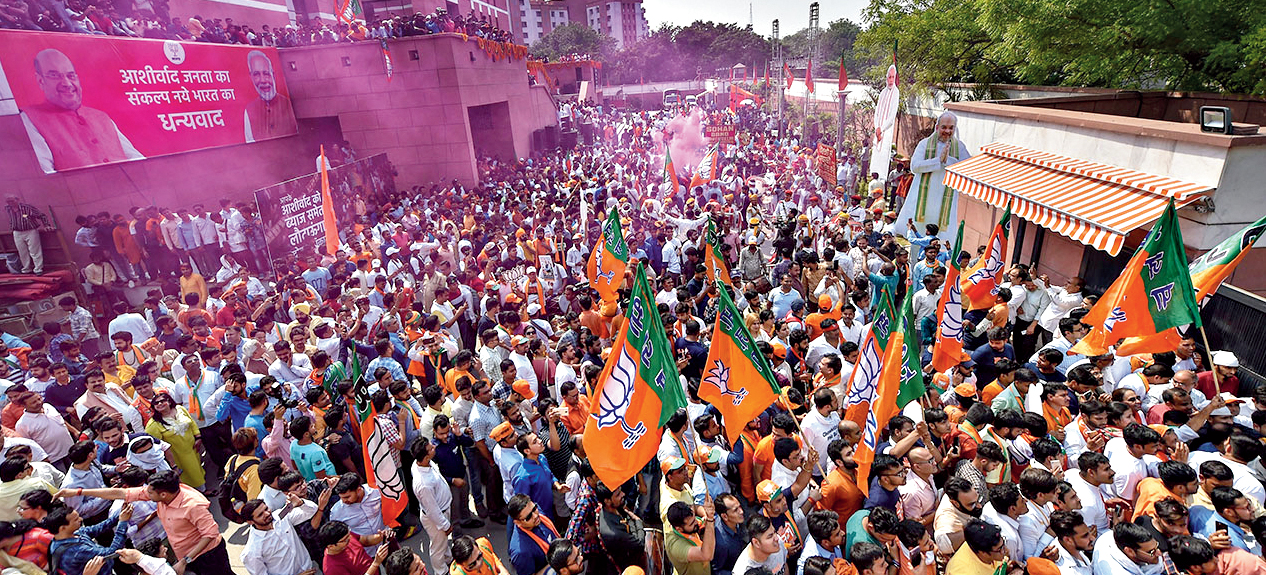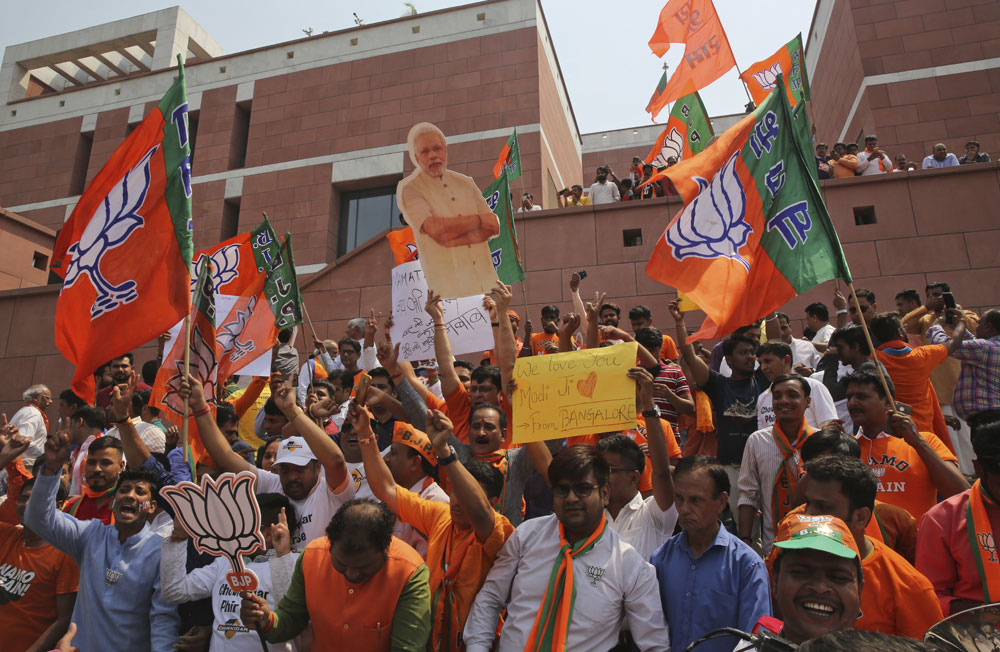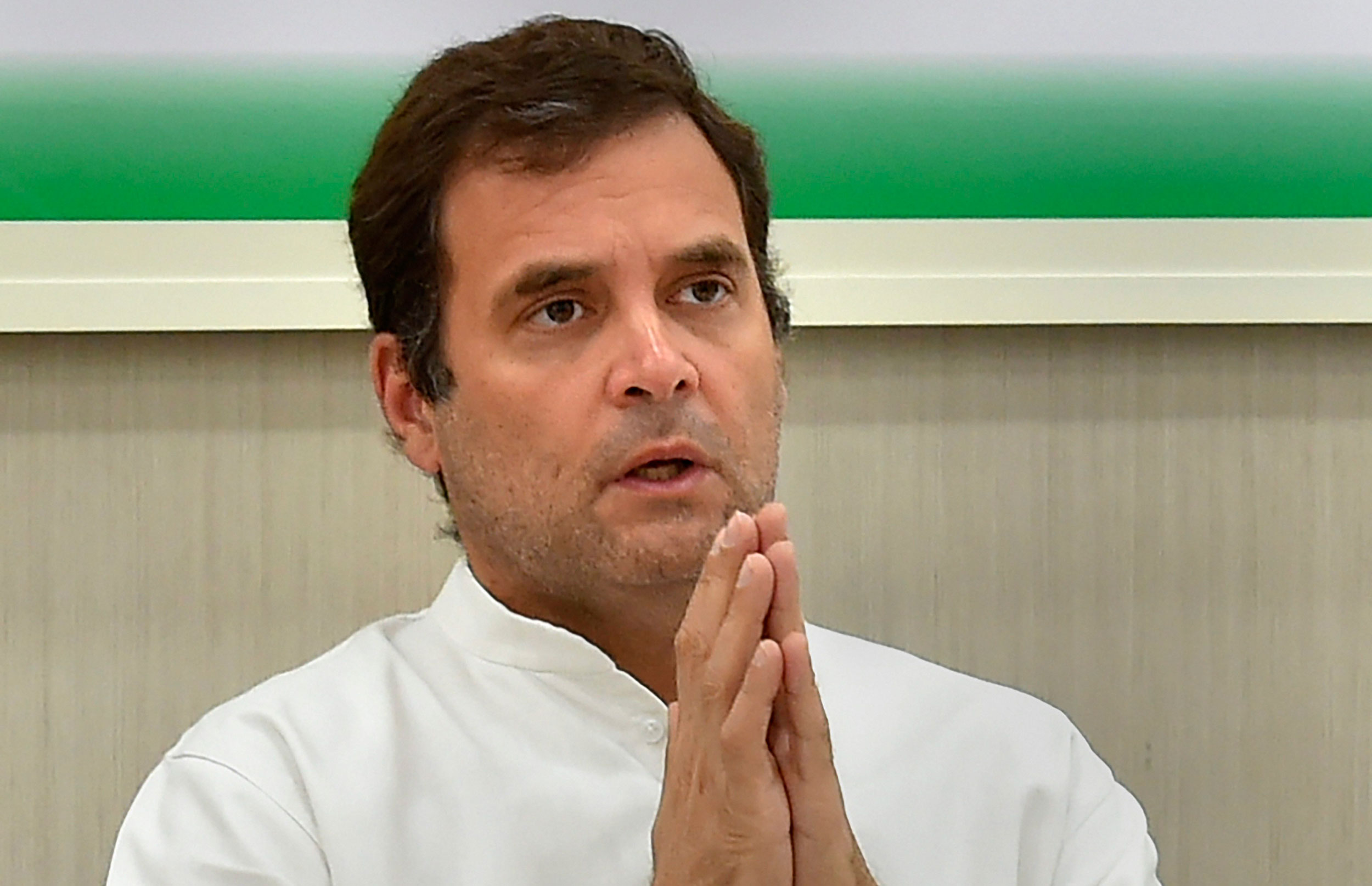Political phenomena are often described in meteorological terms. In election time, especially, reporters and pollsters in the field try to gauge which way the “wind” is blowing; try to detect whether there is an “undercurrent” in favour of one or the other party; and whether that might or might not result in a “wave”. The dimensions of a wave usually become evident only when the results are announced. If it turns out bigger than anticipated, it is quickly declared a “tsunami”.
One reason these clichés from a weatherman’s dictionary come so easily is that there really is something elemental and organic when vast numbers of people sway in one political direction. Sometimes the wave begins from below, small ripples of anger or hope, that slowly gather strength. At other times, it is imposed from above, a manufactured narrative that takes a life of its own. Either way, it begins to resemble a force of nature — and the final outcome inspires the same shock and awe of a freak thunderstorm.
The trouble with such analogy, though, is that it tends to see political processes in cataclysmic terms, reducing complex electoral verdicts into neat binaries, and exaggerating both victories and defeats. The ebb and flow of history is forgotten and there is a rush to jump to conclusions that are instant and sweeping.
This is all too evident over the past few days in social media comments and on our television screens. Narendra Modi, no doubt, has led the Bharatiya Janata Party and the National Democratic Alliance to a remarkable victory. But the May 23 verdict is being imbued with an end-of-history momentousness that does not stand up to scrutiny.
Among the rash of knee-jerk reactions, three stand out. Both supporters and critics of Narendra Modi have concluded that the results of India’s 17th general elections are a ringing endorsement of a Hindu rashtra; a decisive indictment of dynastic politics; and a final blow to the Congress, which is doomed to extinction if it remains under the leadership of the Nehru-Gandhi family.
There is some truth in these assessments but the reality is nowhere near so definitive. The BJP’s core constituency comprising old Hindutva zealots and new Modi bhakts are, naturally, exultant at the magnitude of the party’s victory and see it as a result of Modi’s muscular Hindutva-laced nationalism. Ironically, the BJP’s most vociferous critics have also reached the same conclusion. Till the morning of May 23, those belonging to the secular-liberal universe, convinced themselves that Modi was on his way out. Devastated by the result, they immediately concluded that all was lost — that the people had betrayed the foundational values of the republic and become thoroughly communalized.
While Hindutva played a significant role in the making of the Modi narrative, and was used subliminally in some places and overtly in others, there were many other reasons that contributed to the mandate. The targeted welfare schemes helped, as did the idea of national pride. But the desire for a stable government that Modi was in a better place to provide than a post-poll coalition of squabbling parties was probably an even bigger factor that went into the making of the pro-incumbency wave.
A wave, by definition, encompasses large numbers of “uncommitted” voters who wait till the last minute to switch to what is perceived as the stronger side. It does not necessarily mean that every Indian who voted for Modi is ideologically committed to everything the RSS and the BJP espouse. Those who rarely speak to actual voters, tend to see election verdicts only in terms of numbers — and get overly enthused or inordinately depressed by the metanarrative. But on the ground, things are often different. Multiple factors are at work and it is unfair to see voters as an ideological monolith. For instance, the same young shopkeeper in a small town in Rajasthan or the farmer in a village in Madhya Pradesh who voted Congress six months ago in the assembly election was voting for Modi in the Lok Sabha election. It would be facile to conclude that they were ‘secular’ then and had turned ‘communal’ now. Or that they would not vote differently again tomorrow.
It is equally facile to attribute extraordinary powers to Modi for riding a “wave” two times in a row and overlooking the fact that the electorate, increasingly, prefers delivering decisive verdicts rather than fragmented ones. If Modi was the beneficiary of this trend nationally, the DMK-led front in Tamil Nadu and the YSRCP in Andhra Pradesh were equally successful in securing a “winner takes all” sweep.
With the BJP’s ability to hype up every achievement as “unprecedented” (and despondent liberals echoing the view), it is easy to forget that “pro-incumbency” is not the black swan event it is being made out to be. Forget the era of Jawaharlal Nehru and Indira Gandhi, when the Congress won bigger mandates than the BJP’s current 303 seats on a routine basis. Even the UPA, led by a “weak” prime minister returned to power for a second term — and Manmohan Singh increased the Congress’s tally by over 60 seats. Of course, Modi has won a single party majority both times, but the point is that the Indian voter tends to give the incumbent a second chance — unless there is widespread disenchantment or a particularly robust alternative. Given Modi’s complete dominance over the nation’s psyche for the past five years and total control over every lever of power, his return is not exactly an astounding feat.
The second conclusion that the May 23 verdict was a resounding rejection of dynasty is also overstated. True, there is an increasing impatience with inherited legacies and the sense of entitlement it brings. But if one strikes the right political chord and works hard on the ground, it pays whether one is a dynast or not. That explains the victory of M.K. Stalin in Tamil Nadu and Jagan Mohan Reddy in Andhra Pradesh — both dynasts who campaigned long and hard. That Nakul Nath was the sole Congress victor in Madhya Pradesh because his father has nursed Chhindwara for decades also refutes the anti-dynast theory.
As for the third, and most vociferous conclusion, the best thing that can be said for it is that it has been reached umpteen times before. Every time the Congress loses an election, there is a chorus among the intelligentsia seeking the exit of the Gandhis. The Congress party, they insist, can reinvent itself once it is rid of the ‘Family’ grip.
Congressmen and women resist such calls for a good reason. They know that the Nehru-Gandhis have provided the glue that keeps an amorphous party together. The shambolic nature of the Congress — a loose coalition representing every region, religion and caste of India — is both its strength and its weakness. It belongs to no one (in particular) and to everyone (in general). Such a party can easily disintegrate without a governing principle, an emblem. The ‘Family’ provides that unifying essence.
Every time the Congress has jettisoned the Gandhis (or vice versa), it has lost its moorings. The breakaway groups — Congress(O), Congress(S), Congress(T), Congress for Democracy — withered away and could not take on the mantle of being the “real” Congress minus the Gandhis. Some Congress leaders who left the parent party — Mamata Banerjee, Sharad Pawar, Jagan Reddy — have been more successful. But their parties are confined to specific states and not a replacement for the Congress on a national scale.
Perhaps the centrality of the Gandhis to the Congress can be best understood from the vicious attacks launched against them by Narendra Modi. He knows that the exit of the Gandhis is the easiest way to dismantle the Congress as an edifice — and achieve the dream of a “Congress-mukt” Bharat.
Whether or not Rahul Gandhi steps down as president of the party, he will remain the Congress’s pre-eminent leader. The challenge before the Congress is not leadership but getting its message and messaging right. Just as the BJP, under Modi, has been unequivocal in its espousal of religious majoritarianism, the Congress has to be equally unambiguous in its championing of secularism, diversity, pluralism, compassion and equality. And not fall into the trap set by the BJP to become more ‘Hindu” or jingoistic.
The verdict last week may have had the force of a tsunami. But elections come and elections go — there are no full stops in politics...













